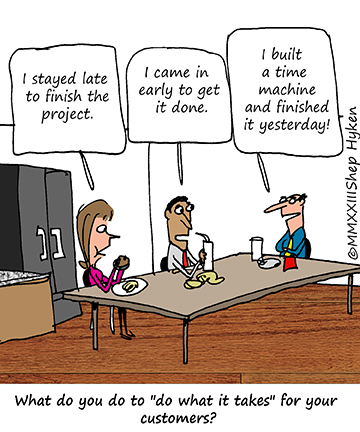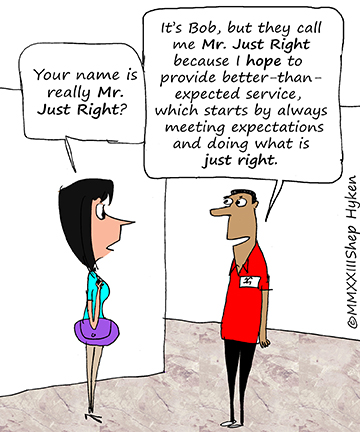(Even When It’s Not in Their Job Description)

GUEST POST from Shep Hyken
As customers, we appreciate it when someone we’re doing business with does more than we expect. Even if we don’t consciously recognize it when it’s happening, the value of that “something extra” makes us enjoy the experience and want to come back.
The same thing happens with employees inside an organization. You can usually find someone who seems to be doing more than expected – something that’s not in their job description.
The other night I was at a restaurant that had an outside patio. It looked like it was going to rain, so we opted to eat inside. About 20 minutes later, the sky opened up, and it didn’t just rain. It stormed. The wind blew over the tables and chairs, and one of the umbrellas blew onto the street. Without hesitation, our server, who was dressed neatly in black slacks, a dress shirt and a tie, ran outside in the pouring rain and moved the umbrella and all the tables and chairs into a covered area of the patio. He came back drenched. As he walked through the restaurant, all the customers who had been watching him through the window gave him an enthusiastic round of applause. I also noticed that the manager thanked him for being the “hero of the moment.”
When our server had dried off and returned to our table, I had to ask him, “When you applied to the job, was moving patio furniture in the rain included in the job description?” We laughed, and he smiled and said, “I just do what it takes.”
I loved that answer.

How many employees do what it takes? This comes in many forms, from working a little later when needed, coming to the office over the weekend if necessary or doing anything outside of a typical job description. By the way, I’m not suggesting employees should not be appropriately compensated for their hard work. They should be. And there’s nothing wrong if employees do only what you hired them to do, especially if they’re really good at it. You don’t want to lose them, so don’t expect them to do more and don’t be upset when they don’t. If you expected more, that should have been discussed and agreed upon when you hired them.
The point is you’ll find people willing to go above what’s expected and those who won’t. As a customer, which employee would you want to do business with? As an employer, which employee would you prefer to be taking care of your customers?
Image Credits: Shep Hyken, Pixabay
![]() Sign up here to join 17,000+ leaders getting Human-Centered Change & Innovation Weekly delivered to their inbox every week.
Sign up here to join 17,000+ leaders getting Human-Centered Change & Innovation Weekly delivered to their inbox every week.

